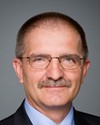Thank you very much, Mr. Benoit.
Merci.
It is a pleasure to be here today to address the House of Commons Standing Committee on Natural Resources as you study the question of resource development in Northern Canada.
My name is Pam Schwann. I'm the executive director of the Saskatchewan Mining Association. Joining me today, as already introduced, are Ms. Tammy Van Lambalgen, vice-president of regulatory affairs and corporate counsel for AREVA Resources Canada, and Mr. Gary Merasty, vice-president, corporate social responsibility, Cameco.
The Saskatchewan Mining Association is an industry-funded organization that is considered to be the voice of the mining industry in Saskatchewan. We have more than 40 member companies, including producers of coal, potash, uranium, metallic and industrial minerals, as well as companies carrying out exploration in the province.
The SMA has submitted a brief to Mr. Lauzon, the committee clerk, entitled “Saskatchewan Mining: Global Leaders”, but in the interests of time and your specific interests, after some general remarks the presentation will focus specifically on the mining industry in northern Saskatchewan.
The main points we would like to bring to your attention are these: the Saskatchewan mining industry is a significant Canadian and global mineral producer; Saskatchewan mining companies operate world-class mining facilities; Saskatchewan mining companies are Canadian and global leaders with respect to aboriginal employment and business development opportunities related to their operations; and, an efficient regulatory and strategic policy system will help ensure that Saskatchewan mining operations continue to deliver benefits to Saskatchewan, Canada, and the world.
The Saskatchewan mining industry is a significant global mineral producer. In 2010 we ranked second in Canada in terms of the value of mineral production, with a value of just over $7 billion. We are the world's number one producer of potash, producing about 31% of the global supply, and are the number two producer of uranium. We currently produce about 18% of the global supply, which is down from about 28% of global production in 2005, when we were the world's number one producer of uranium.
Saskatchewan will continue to be one of Canada's leading mineral producers for the years to come. The existing mining operations have announced intentions of more than $43 billion in investment in the next 20 years in their current operations.
I'm going to skip to page 9 of the presentation you have in front of you. There is a mineral resource map of Saskatchewan on it. The remainder of our presentation today will focus on the activity on the northern third of this map. I have a coloured copy that I'm going to put up so that you know what you're looking at.
Predominantly, there's a yellow oval structure on the map showing the area that involves most of our activities, and that's where the uranium production comes from: the Athabasca Basin region of northern Saskatchewan. On pages 11 and 12 of the presentation we talk about uranium production. Mines in Saskatchewan provide 100% of Canadian uranium production. It was valued at just over $1.2 billion in 2010. The mineral production came from three operations: McArthur River, which on the map is shown as number 48, marked by a red dot; Eagle Point; and McClean Lake.
Specifically, the McArthur River mine is the world's highest-grade uranium mine, with average grades of around 20%, compared with a world average that is just under one per cent. It currently provides the majority of Saskatchewan uranium production and itself is responsible for 15% of the world's uranium supply.
There are currently over 25 years of production from existing mines, and there continue to be new discoveries over broad geographic regions of the Athabasca region. On the mineral resource map of Saskatchewan, these include areas such as Cigar Lake, number 45, Shea Creek, on the west side of the Athabasca Basin, number 33, the Millennium deposit, and the Roughrider zone, just to name a few.
Turning to gold production, Saskatchewan currently has two gold producers: long-time producer Claude Resources, whose Seabee mine is nearing the mark of one million ounces of gold production. More recently, in December 2010, we had another mine start-up, which has started producing gold as well.
In terms of exploration, we have healthy mineral exploration expenditures of approximately $270 million forecast for 2011, with $100 million of this targeted for northern Saskatchewan.
While mining and exploration bring benefits in terms of revenues to companies and governments, mining has also been a key driver of economic and social benefits in terms of employment, business development, and school retention.
On page 15 of your presentation, we have some information with respect to northern employment. Mining companies in northern Saskatchewan are leaders in hiring first nations and Métis people at their operations. Cameco is the number one industrial employer of aboriginal people in Canada.
There are over 3,100 mine and long-term contractor employees at the northern Saskatchewan mines, including 660 residents of Saskatchewan's north. In 2010, a payroll of over $90 million was paid to the direct employees, and contractors paid an additional $217 million to their employees; I should say that this is an update from the numbers in the presentation that refer to 2009 information.
Some of the tools that have assisted us in reaching this employment achievement are surface leases and cooperative tools such as the multi-party training plan and northern career quest, an ASEP-funded program. As shown on page 16 of the presentation, northern mining employees make up an increasing proportion of workers in the higher skilled categories, such as supervisory, technical and trades. That is at 39% now, compared to 22% in 1984.
Business development is highlighted on page 17 of the presentation. Northern mining companies have worked closely with northern economic development agencies to incubate successful northern businesses. These successful businesses, such as Kitsaki Development Limited Partnership, which is the economic development arm of the largest band in Saskatchewan--the Lac La Ronge Indian Band--and Athabasca Basin Development Limited Partnership, are now transferring their business skills that were developed in the north into southern mining operations.
Looking specifically at economic benefits derived from northern mines, in 2009 northern mine operations purchased $279 million in goods and services from northern businesses, which is approximately 62% of all goods and services purchased. In 2010, mining companies purchased goods and services worth over $361 million from businesses based in northern Saskatchewan.
I'd like to turn now to some of the key challenges the mining industry faces.
The first one I'd like to speak to is with respect to regulatory effectiveness. As noted by the commissioner for environmental and sustainable development, the federal environmental assessment process suffers from systemic delays and a lack of coordination between federal departments, and focuses on expensive and frustrating processes without being able to demonstrate value to the environment or society.
While Bill C-9 introduced improvements to CEAA to address some of these issues, these amendments did not apply to projects subject to Canadian Nuclear Safety Commission authority; hence, most of the projects in northern Saskatchewan will not see the benefits of these amendments. By comparison, in Australia, the federal and state governments completed a review of BHP's massive copper, gold and uranium Olympic Dam proposal in approximately two years. The significant time difference in reviews places Canadian projects at a competitive disadvantage to uranium projects being developed in other countries.
The mining sector also continues to see increasing regulatory engagement, with Species at Risk and Migratory Birds Convention Acts, the Department of Fisheries and Oceans, and regulations related to clean air. Also, the lack of integration of the duty to consult policy between federal and provincial agencies on the same project causes capacity issues for both industry and first nations and Métis communities.
The second issue I'd like to briefly speak to is access to highly skilled and highly qualified people. This is a huge challenge for the mining industry going forward due to retirements and also due to expansion. Programs such as the aboriginal skills employment program, ASEP, have been very beneficial in the past, as has the national sector council's Mining Industry Human Resources Council. Both of these programs are being wound down, or funding has been significantly reduced.
Lastly, the inadequate infrastructure in northern regions affects the competitiveness of the mining sector and also affects the abilities of northerners to effectively participate in employment and economic development opportunities related to mining.
Time permitting, I'll go to page 20 in your program, which shows you some examples of how federal regulations and policy have the potential to drastically affect mineral development in northern Saskatchewan. This relates to Environment Canada's proposed recovery strategy for boreal woodland caribou, which is currently up for public review. This strategy would effectively restrict development in the grey areas shown here, and would eliminate development in Saskatchewan in the blue areas shown: over 30 million hectares and essentially all of the Precambrian Shield area of northern Saskatchewan.
We feel that the model Environment Canada has used is based on incomplete and inaccurate science and on faulty assumptions and professional judgment, particularly with respect to the relationship between the availability of caribou habitat, the high incidence of natural fires in northern Saskatchewan, and the very limited proportion of human disturbance. These types of policies really affect the ability of the mineral industry to move forward.
In conclusion, Saskatchewan is a leading global producer of potash and uranium, although we have lost our number one ranking with respect to uranium. Saskatchewan continues to offer excellent resource potential, with world-class deposits. Mining, directly and indirectly, currently employs over 30,000 people and is poised to employ significantly more in the future as the mining industry invests over $42 billion in the next 20 years.
Saskatchewan mining companies are Canadian. They are world leaders in aboriginal employment and business development. However, key regulatory issues impede growth, without demonstrating an environmental benefit.
With that, I'd like to thank the members of the House of Commons Standing Committee on Natural Resources for inviting us to make this presentation today. We'd be very pleased to answer any questions you may have.
Thank you.











